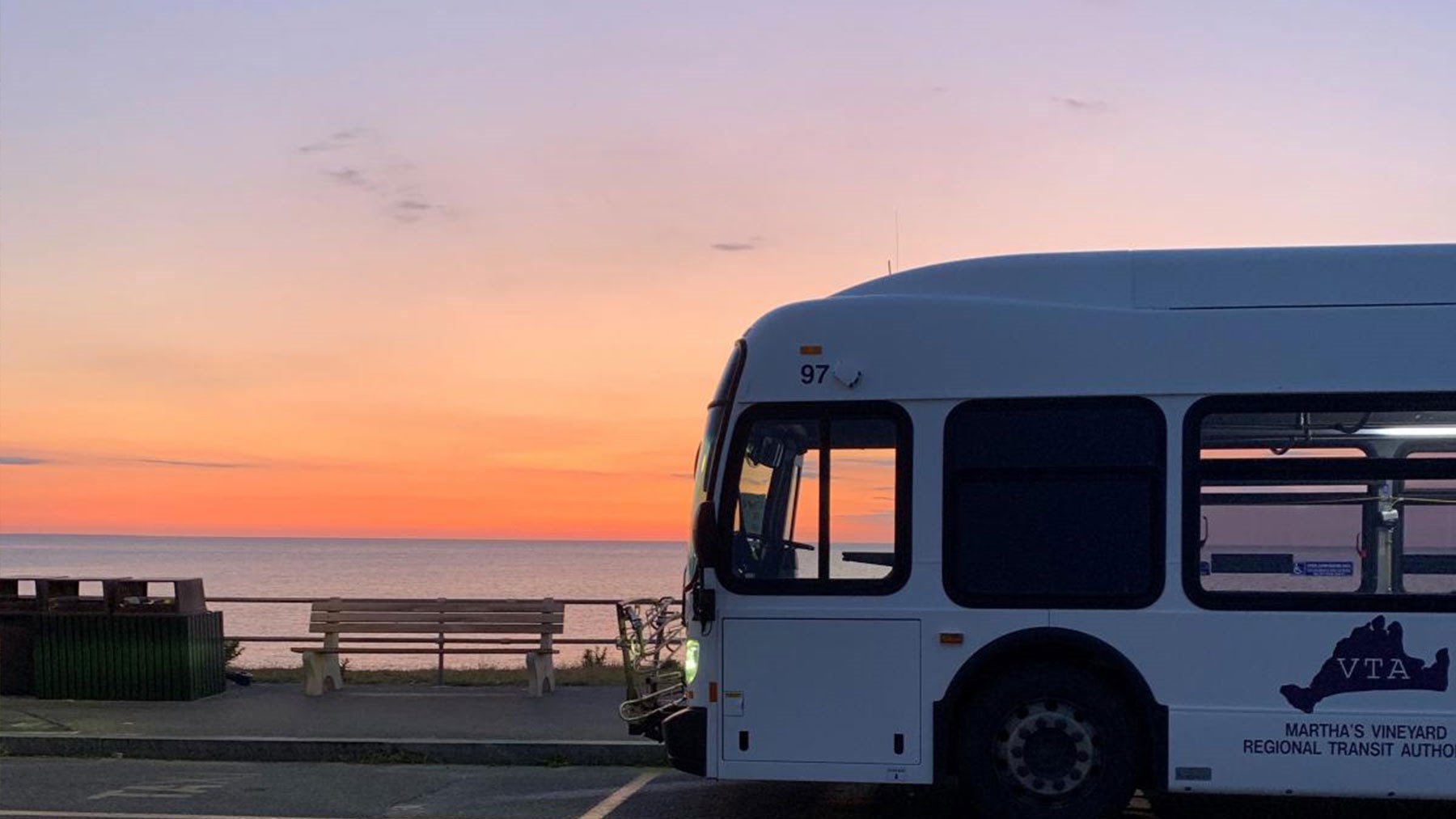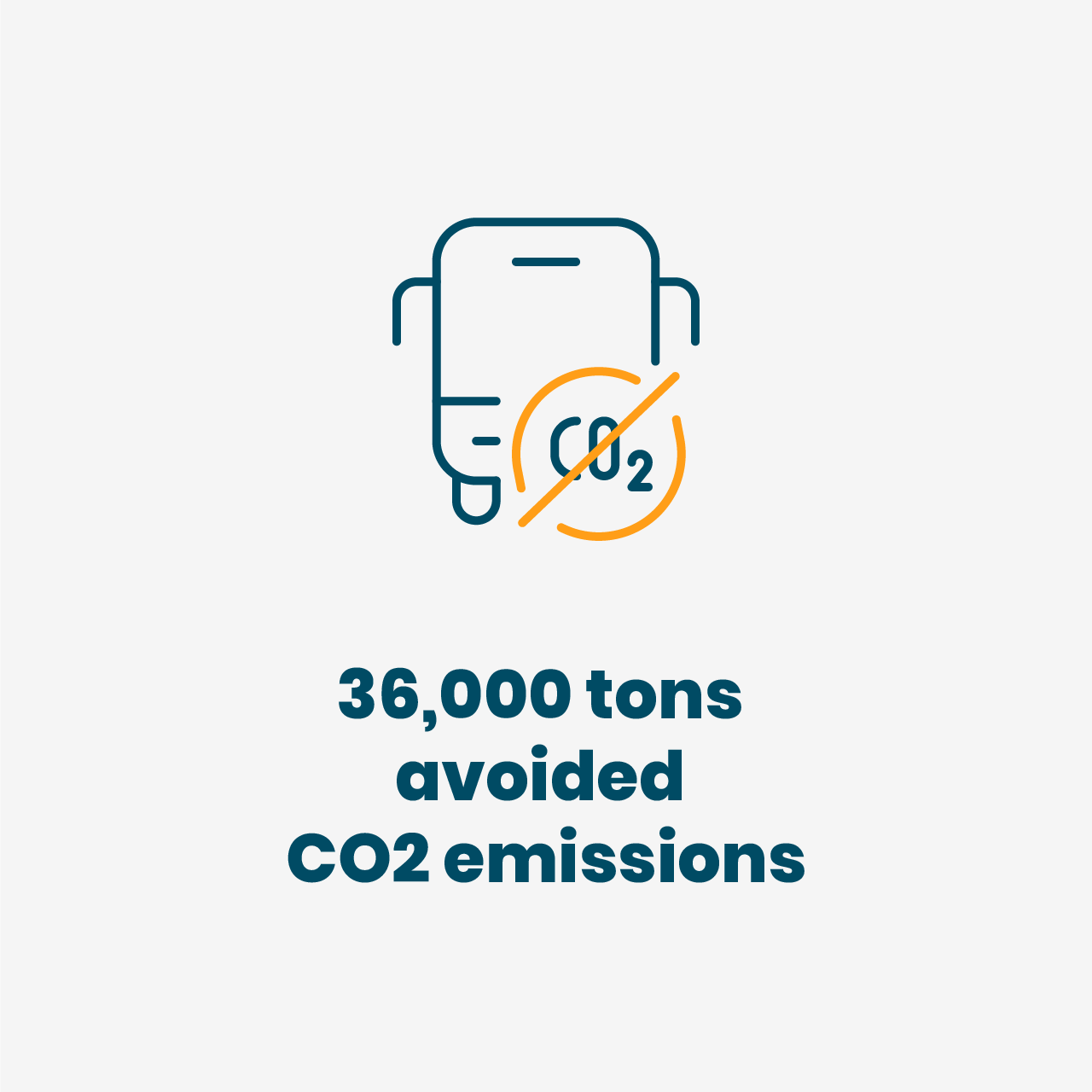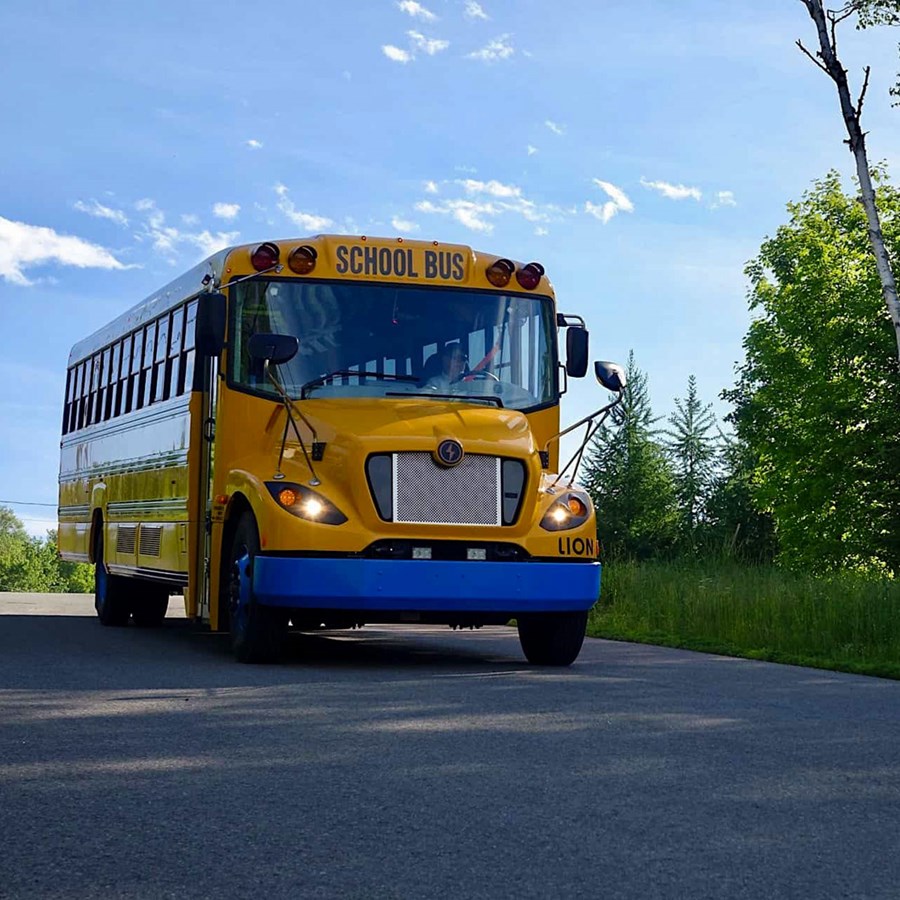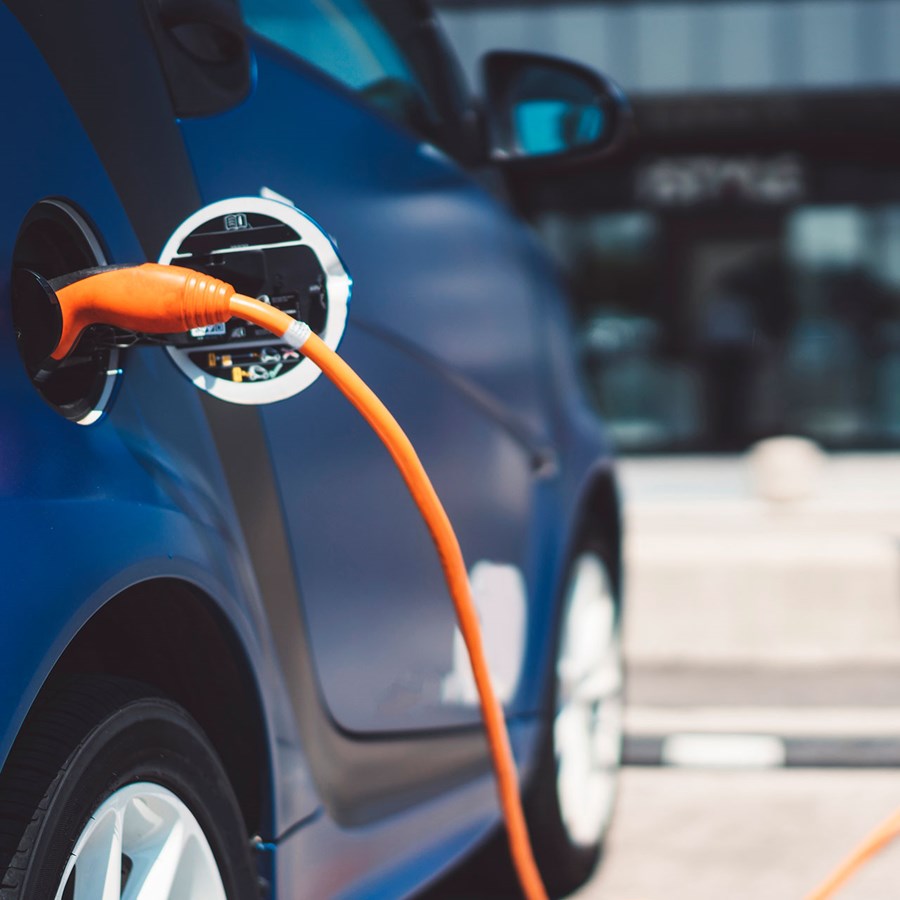What if a microgrid could ensure reliability for your community and your electric transit system?

The Challenge
Martha's Vineyard Transit Authority (VTA) wanted a more reliable, cleaner and quieter bus fleet without compromising dependable service for its community. But switching fuels has its challenges and island life can mean unpredictable power, making fleet electrification complicated.
The Solution
Using careful infrastructure planning and a single-customer microgrid, we worked under the VTA’s leadership to transition to a partially electric bus fleet, ensuring that demand and reliability concerns were addressed with a self-sufficient power supply. Services: Clean and Flexible Grid , Transportation Electrification
The Impact
Our collaboration laid the foundation for the nation’s first integrated, clean, resilient, and flexible public transportation system. The electrification of VTA’s fleet means 300,000 miles were driven with electricity instead of fossil fuels in 2020. Once the VTA achieves its long-term plan to go 100% electric, it will reduce CO2 emissions by 36,000 tons over ten years of driving 1.4 million miles annually.
Cleaner communities through electrified transit
Martha’s Vineyard Transit Authority (VTA) provides year-round public transportation for 1.3 million of the island's visitors and residents. With a vision for a more environmentally responsible future, the VTA began identifying opportunities to build a reliable, cleaner, greener, and quieter fleet. The move would better align their transportation offerings with their surroundings, helping to preserve the natural beauty and air quality of the Vineyard by lowering greenhouse gas (GHG) emissions.
Electrification was a compelling solution, but it comes with challenges. As a critical service, the VTA needs to operate at all times, regardless of power supply. With an electric fleet there would be a risk to reliable service during an extended power outage.
Costs can be a barrier, too. But while electric buses have higher purchasing prices than diesel, their maintenance and fuel costs make them an economically wise investment in the long run. To maximize these savings, it’s important to plug the buses in at optimal times, when there is low demand on the grid.
The electrification of VTA’s fleet means 300,000 miles will be driven with electricity instead of fossil fuels in 2020. Once the VTA achieves its long-term plan to go 100% electric, it will reduce CO2 emissions by 36,000 tons over ten years of driving 1.4 million miles annually.

Ensuring reliability while reducing demand
Moving to an electric fleet while sustaining dependable, uninterrupted service required independent control and renewable generation. A single-customer microgrid was the answer. Microgrids are small, self-contained distribution, storage, and generation networks that can be both connected to the grid or fully self-sufficient when needed, making them a natural solution for transit electrification. For the VTA, local energy generation and storage are especially valuable in the event of a power outage or major weather event.
Our collaboration laid the foundation for the nation’s first integrated, clean, resilient, and flexible public transportation system. The system uses solar panels and energy storage infrastructure to allow the VTA to charge vehicles overnight at the facility without interrupting service. During the day, buses can “fill up” at on-route chargers powered by smaller solar and storage systems without incurring high electric demand charges.
“By electrifying our fleet we’re able to manage our fuel costs and reduce GHG emissions. The microgrid gives us the reliability we need, while allowing us to prevent peak electrical. Our top priority throughout this project has been to ensure our customers receive the same reliable service they know and love. I’m proud to say we’ve done that, while also improving air quality and creating a better future for our community. ”
Custom solutions for complex challenges
Every energy challenge is different. There was no out of the box solution in this case. The VTA had a vision for evolving their fleet and chose VEIC as a partner on the project through a competitive bidding process. During the planning stage there were additional bidding processes to select buses, charging equipment, software, a solar provider, and a battery provider. We helped the VTA identify, apply for, and get awarded new sources of state and federal grants to fund their efforts. As the project came to life, our technical assistance helped inform bus deployment including route analysis and planning as well as microgrid design and installation.
The VTA has already made a great impact with 300,000 miles in 2020 driven with electricity instead of fossil fuels. In May of 2021 the VTA flipped the switch on their solar canopies, and as of June their electric bus count increased to 14 of their full 38 bus fleet. Electrification isn’t just reducing greenhouse gases either, it’s giving them cost savings, too. 300,000 electric miles per year, over the next ten years, will save $4 million through reduced bus operation costs, solar, and battery storage. And that doesn't account for the additional savings the VTA will see once they achieve their plans of a fully electrified fleet. The clean energy future of the island is bright.
This project's team leaders
View Our Team



